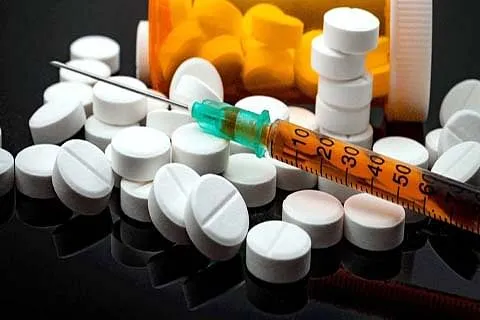A majority of persons among thousands involved in drug abuse across Kashmir came from Srinagar and 90 percent of all abusers belonged to nuclear families, a study conducted by J&K state human rights commission has found.
“The problem of drug addiction in the state of Jammu andKashmir has revealed that 40 percent of the youngsters fall prey to drug abusewhich includes both boys and girls of the age group between 16-25 years,” thereport by SHRC states.
“Our investigation clearly shows lack of administrationwhich, as a result, let loose the ones who indulge in making drug abuseflourish in the valley,” the report concludes.
The study “Drug Addiction In Kashmir” has found thatsubstance abuse had a direct relationship with economic background of families,with the highest number of abusers, 34.5 percent, belonging to families whosemonthly income was above Rs 45000 and 2.5 percent to those with no regularmonthly income.
“19 percent of the patients had family income rangingbetween 15000 rupees to 25000 rupees. 18 percent patients had a family incomeof 15000 rupees and less. 14.5 percent of the patients had family incomeranging between 35000 rupees and 45000 rupees. 11.5 percent had a family incomeranging between 25000 rupees to 35000 rupees,” the study reveals.
The combination of easy availability of money, nuclearfamilies among the economically better off classes and inaction of theadministration drives drug abuse, with teenagers and youth in their early 20sworst affected.
The study also elucidates that 90 percent of drug abusersinvolved in drug abuse came in nuclear families, while only 10 percent patientswere from joint families.
37 percent of all the addicts who reported to de-addictioncenters belonged to Srinagar, while other 20 percent came from Baramulla andBudgam districts, followed by Anantnag district from where 9.5 percent of thepatients came.
Other districts of the state account for 30 percent of thedrug users.
“Awareness about drugrehabilitation centres may be more among the people who live in the districtSrinagar due to availability and accessibility of such rehabilitation centresthere,” states the report.
A de-addiction center at Kashmir’s premier SMHS hospital hasalso registered an increase in the influx of abusers for several years.
According to the SHRC report the center received 2535patients and 224 patients in its outpatient department (OPD) and in-patientdepartment (IPD) respectively in 2016, which increased to 2692 patients and 408patients in OPD and IPD respectively in 2017.
In 2018, the center received 3895 patients and 440 patientsat its OPD and IPD respectively.
“44 percent started using drugs during the age group of 16to 20 years …The second largest age group having the strength of 19 percent belongsto 21 to 25 years of age…The third age group of belongs the age group of 15years…,” mentions the report.
The report has also found that cannabis is mostly used inKashmir by drug users owing to its easy availability, while heroin comes secondon the list.
“Female drug users were found using drugs like alparx,codeine, phosphate, diazepam, fluid, iodex, etc., Financially sound persons areaddicted to alcohol and hard drugs like brown sugar,” says the report.
The report also mentions 69 percent of the drug users wereeducated to 12th standard and more than 20 percent were graduates.
The study shows “41 percent being self-employed orbusinessmen, while the next majority 35 percent belong to student community.”
The report has also concluded that there is “least scope forrehabilitation” of drug users in Kashmir considering the availableinfrastructure and “lack of administration”.
“Kashmiri society is one of the societies rather the onlysociety where there is least scope for rehabilitation of those who have fallenprey to the menace of drug addiction. There is a lack of proper infrastructureand counseling centres which could prove helpful in putting an end to the drugabuse,” the report says in one of its conclusions.






